Creating technical documentation is quite a difficult task. It needs to be extremely accurate, detailed, and continually updated to ensure it really helps the people it’s created for.
With so much to consider, you wouldn’t be amiss asking yourself: is technical documentation really worth the effort?
Well, we’re here to tell you that it definitely is.
This article will explain some of the important benefits technical documentation can have for your business, and how it can help each and every stakeholder involved with your product.
By the time you’re finished reading, you’ll wonder how you’ve ever worked without it.
So let’s dive right in with our first benefit.
More Efficient Issue Resolution
Technical documentation actually has the power to revolutionize your customer support practices.
By building a strong network of user guides, troubleshooting articles, and FAQ sections, you’re enabling customers to find solutions to their own problems and teaching them to be independent power users of your product.
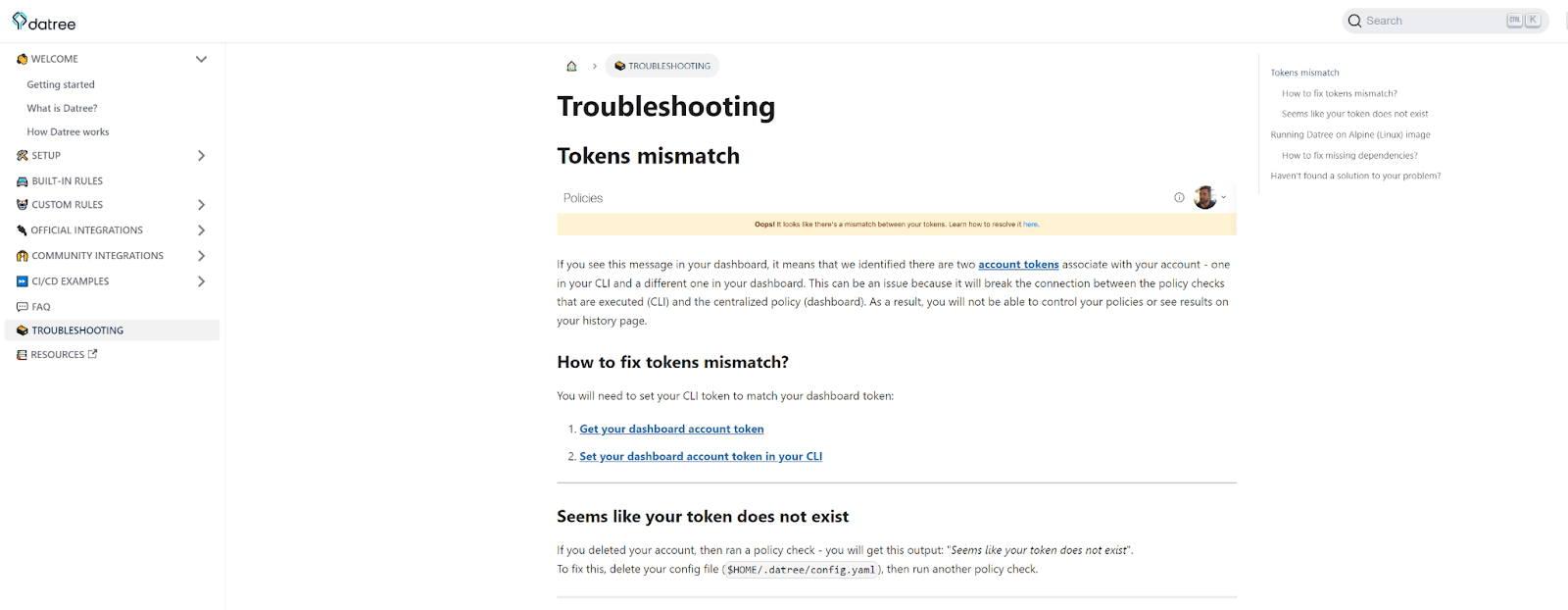
Source: Datree
Not only that, but you’re also fostering a strong sense of engagement with and commitment to the product, which can inspire brand loyalty and keep those users around for a long time.
This might sound like a stretch, but the truth is that people like to take on an active role in solving their own issues, rather than be at the mercy of some unknown support agent.
That could explain why the respondents in a recent survey overwhelmingly expressed their willingness to use online knowledge bases to solve their issues.
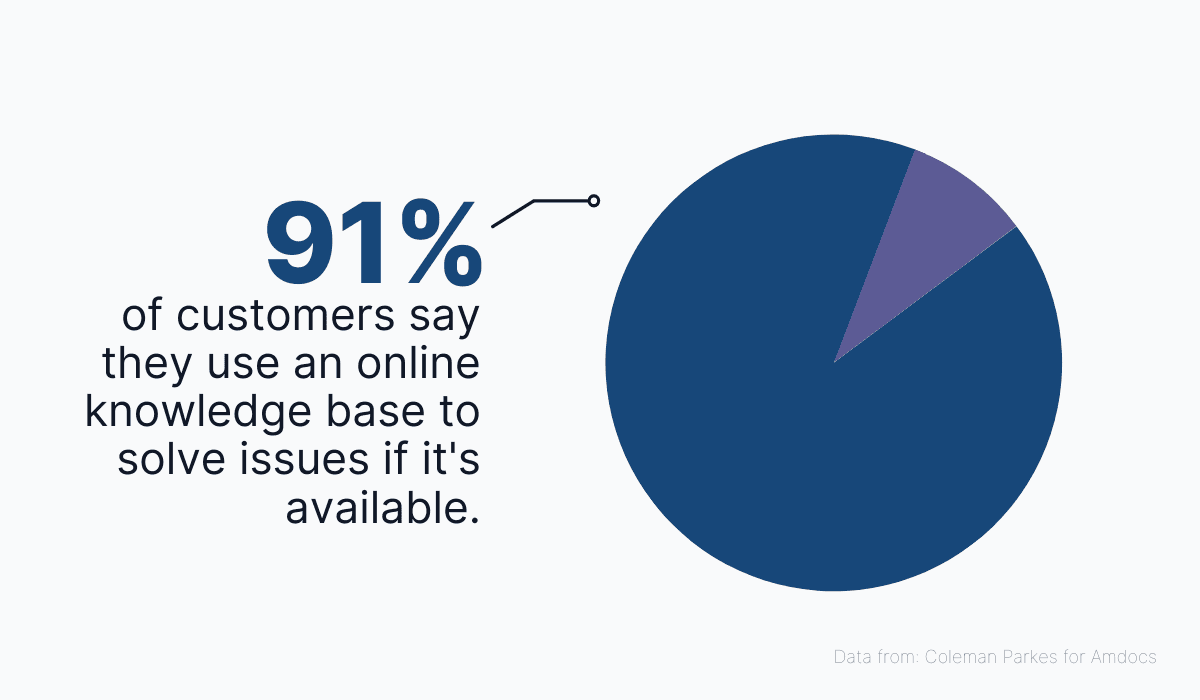
Source: Archbee.com
Clearly, customers prefer self-service help provided by quality technical documentation. Especially if you are a B2B SaaS startup.
Apart from strong statistics, there’s also ample anecdotal evidence to support the claim that people like to solve their own problems.
For example, writing for The Harvard Business Review, Michael Schrage, an expert on behavioral economics, retold an interesting story attesting to the point.
He describes how he inadvertently deleted a key function of his smartphone and spent a frustrating amount of time looking for solutions online.
He finally gave up two days later and visited a Sprint store where a helpful member of the support staff resolved his issue in fifteen seconds.
In his article, he concludes:
“While I had a great (and brief) experience with the sales associate in the store, it would have been even better to have easily and quickly found the 15-second fix myself online.”
This echoes our point: Schrage spent two frustrating days trying to fix the problem himself, which only goes to show what lengths people are sometimes willing to go to remain an active participant in issue resolution.
Imagine how much more pleasant Schrage’s user experience would have been if he’d had access to technical documentation that dealt with this specific issue and how much time he would have saved had he been able to resolve it on his own.
To cut a long story short, technical documentation enables more efficient issue resolution and will save your users a lot of grief.
Improved User Experience
Speaking of user experience, there’s lots more that technical documentation can do in order to ensure a smooth and comfortable journey for product users.
It’s no secret that today’s apps and software products can be quite complex and using them isn’t necessarily intuitive.
Thankfully, most products also come with documentation so that users are supported during installation and usage.
When problems do occur, they can largely be attributed to skipping the user manuals and interacting with software without external guidance.
This happens more than you may think.
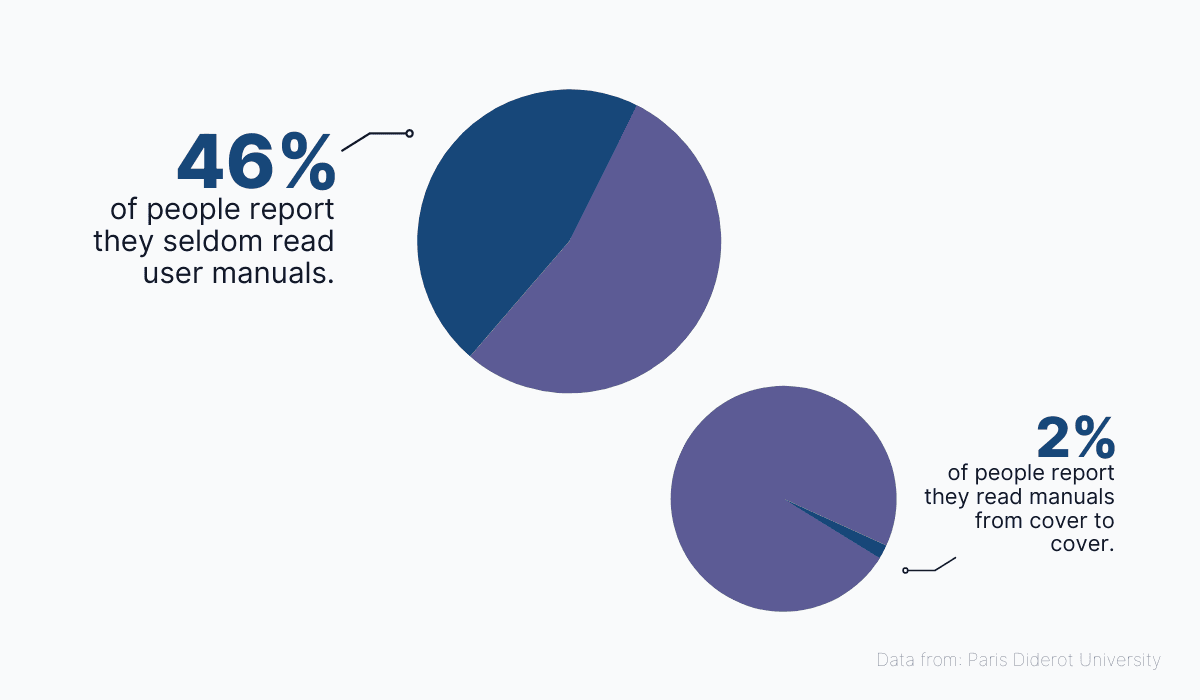
Source: Archbee.com
In the opposite case, when manuals, user guides, and instructions are studied, users stand to receive a stellar user experience because they won’t be making any mistakes or missing out on important features.
In this sense, technical documentation can improve user experience in a couple of ways, ensuring that the product is:
- set up correctly by preventing installer errors
- used properly by showcasing basic features and instructing how they should be used
- used to its fullest potential by informing the user about advanced features and motivating the user to try them
For example, consider this advanced features guide from Samsung:
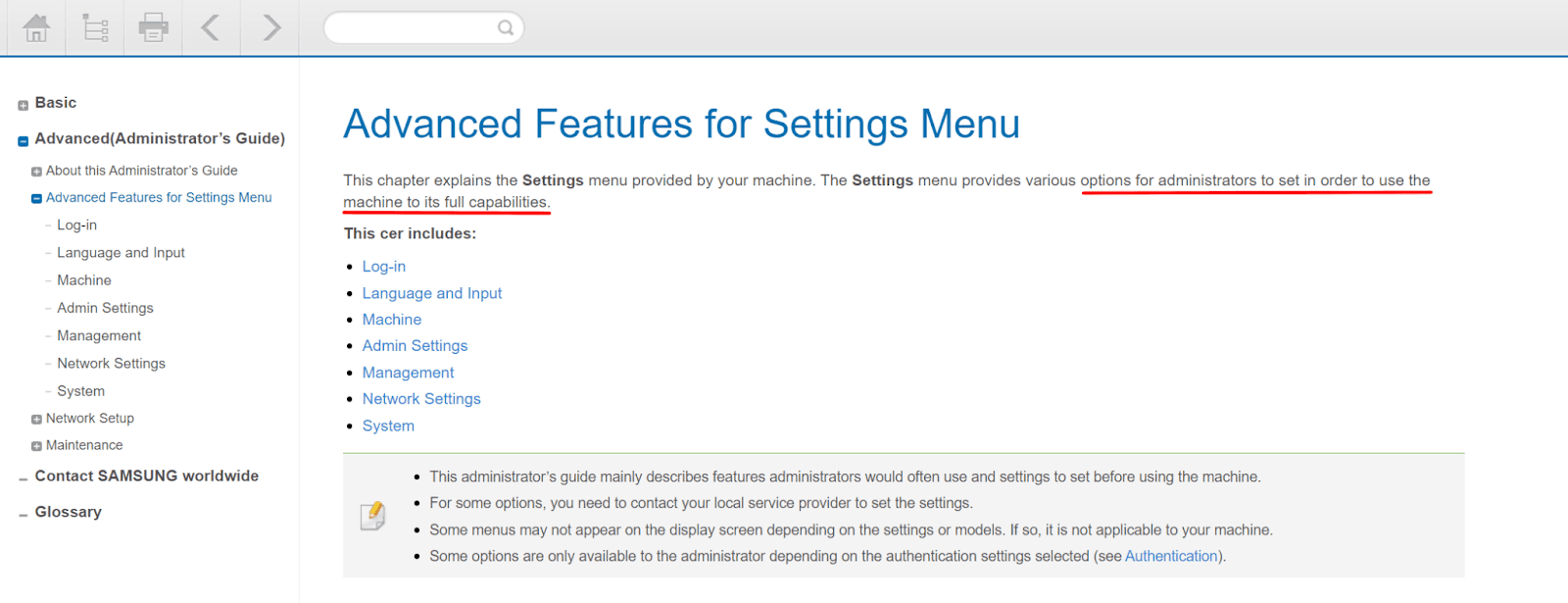
Source: Samsung Setup
Without this document, a user might not even be aware that these advanced settings existed and their user experience would be less than optimal.
In this way, technical documentation empowers users to go above and beyond with the product and achieve things they never thought possible within the scope of the product.
This is just one of the ways in which technical documentation can help create happy customers and even loyal brand ambassadors who will share their great experience using your product with others.
What, you’ve never heard of a customer excited about technical documentation? Well, they do exist, we assure you.
A great example comes from DedicatedMC, a company that offers Minecraft server hosting.
Their service includes an excellent knowledge base that helps users set up their server and start using it without a hitch. And users can’t stop raving about it.
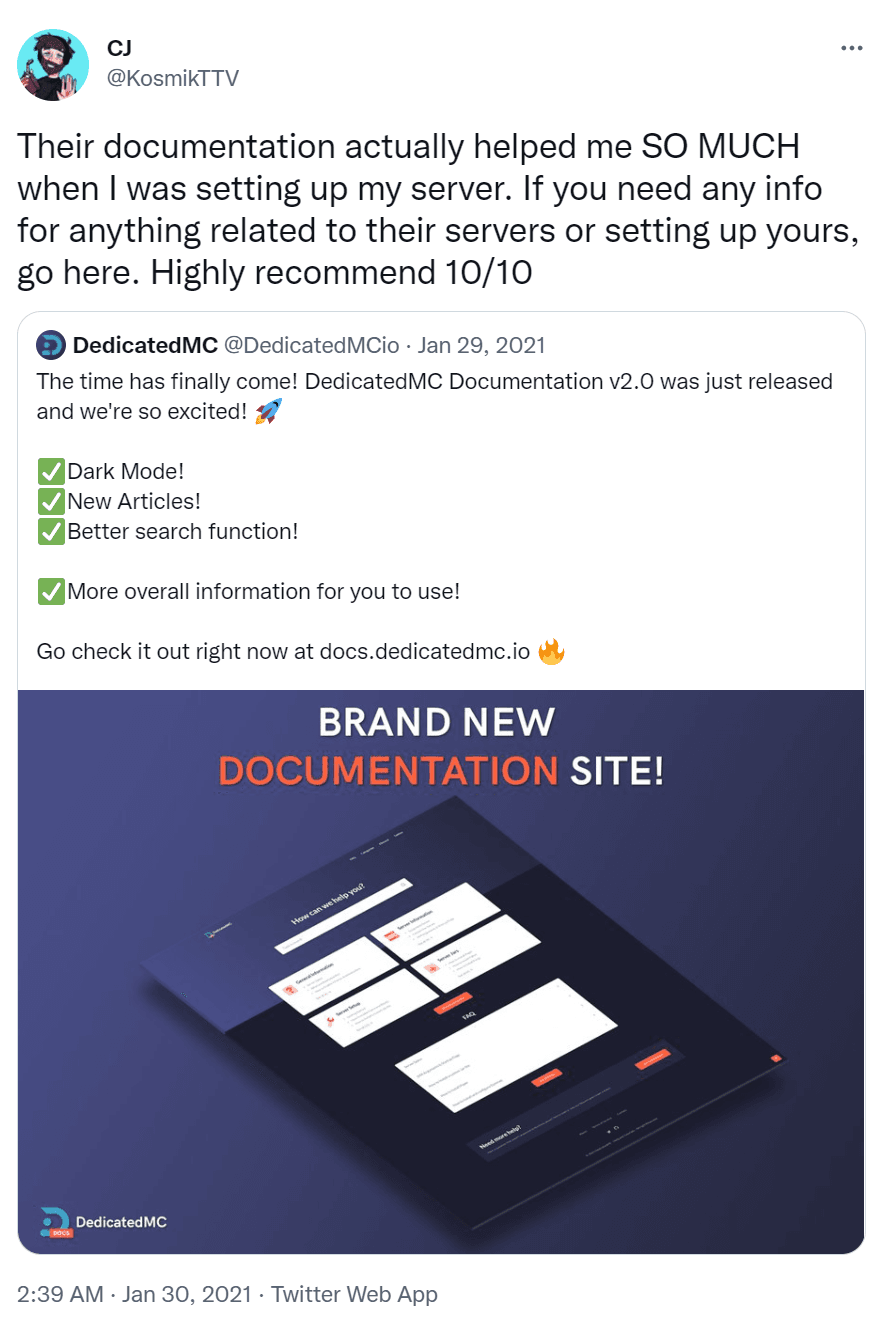
Source: Twitter
The technical documentation even gets a special mention in some of the reviews:
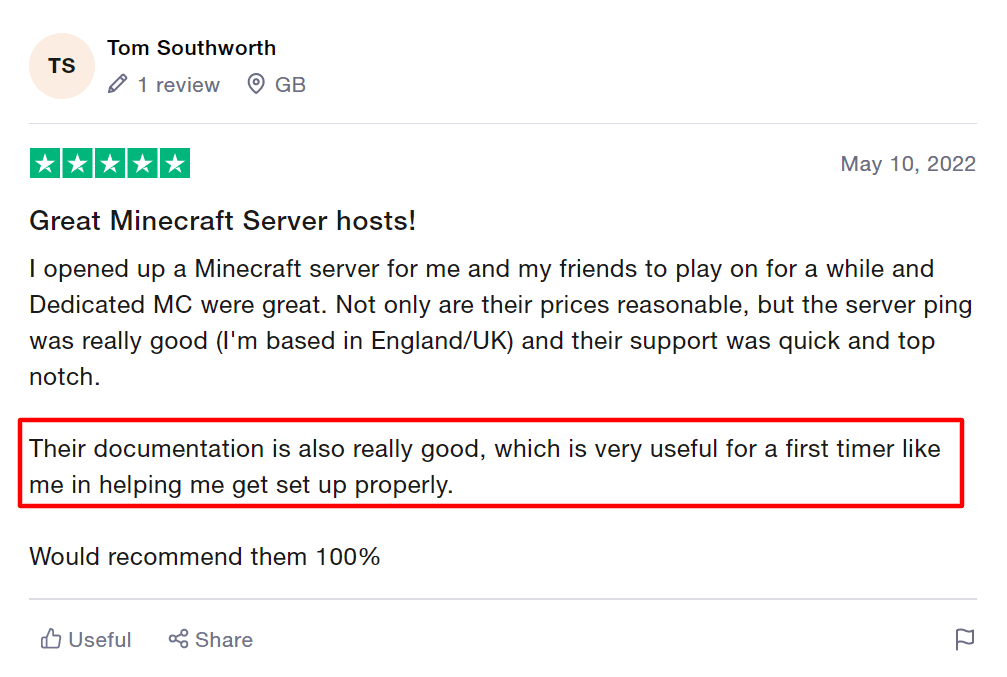
Source: Trustpilot
As you can see, technical documentation plays a vital role in user experience. It provides users with the opportunity to successfully set up and use a product to its full potential.
It’s one of the easiest ways available to you to turn new customers into exceptionally happy users.
Less Dependency on People’s Presence
One benefit of creating technical documentation that has become increasingly important for today’s business is that it helps preserve knowledge even when experts leave the company.
As you probably already know, the last few years have seen increased turnover rates, and in the US alone, millions of people are leaving their jobs in search of better opportunities.
The situation is so severe that this period has come to be known as The Great Resignation.

Source: Archbee.com
This raises the question: what happens to all the knowledge and expertise these employees brought to their jobs?
Unfortunately, in many cases, it leaves with the exiting staff.
However, with internal technical documentation and good knowledge management practices, important work procedures, successful practices, and all kinds of data are safely guarded and accessible even when employees leave.
In this way, the adverse effects of losing an employee can be mitigated (at least in part.)
If that’s not clear enough, let's look at a real-life example of how failing to document work processes can cause big problems for a company.
This Redditor was asked to keep working on new software features instead of documenting the code during their two-weeks notice.

Source: Reddit
In their post, they express concern that the company will have trouble understanding the code once they leave. If the Redditor was working on the features alone, this is a valid concern.
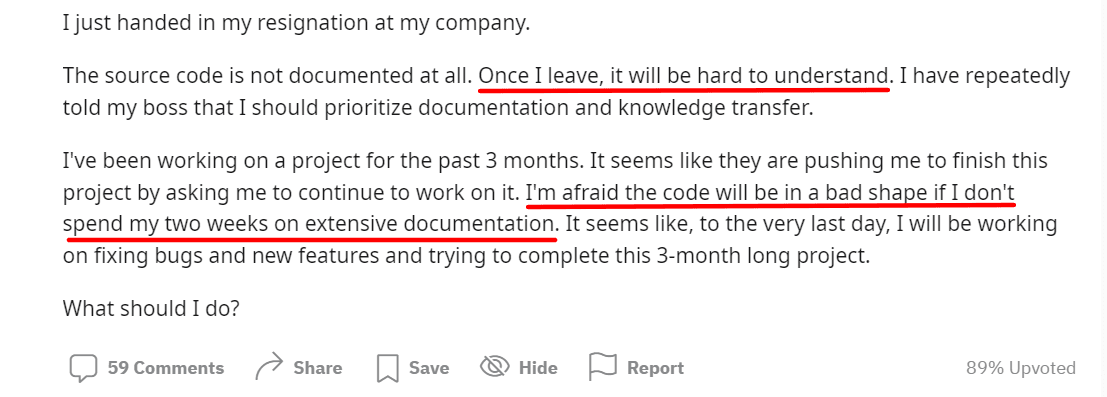
Source: Reddit
Documenting code is an excellent example of how technical documentation can help you preserve knowledge and not rely on people’s presence.
With documentation, the next developer to take on the role can simply continue the work from where the old developer left off.
Here’s what documenting code looks like in practice:

Source: Espressif
Failing to document knowledge can set back your work for extended periods of time. There are solutions, but they often come at a great cost.
For instance, here’s a proposed solution from the comments under our Redditor’s post:

Source: Reddit
Once they leave, ex-employees are under no obligation to help you retrieve the knowledge that was lost.
Therefore, documenting internal processes in this way can save you a lot of time, money, and, equally important, embarrassment.
Saved Time
Let’s focus on the subject of lost time for a moment. In the last section, we talked about how vital knowledge can simply vanish when an employee leaves the company.
But that’s not where the troubles end.
Even if the employee stays, if their knowledge isn’t documented, other members of the team will have trouble accessing it.
You’ve probably found yourself in this frustrating situation in the past.
You need an important piece of information to move your project forward, but the person who has it isn’t available at that moment.
They could be in a meeting, on vacation, or simply one of those colleagues who don’t pay close attention to their email inbox.
You’re waiting for them to answer your inquiry and your project stagnates.
Again, this is quite a common occurrence.
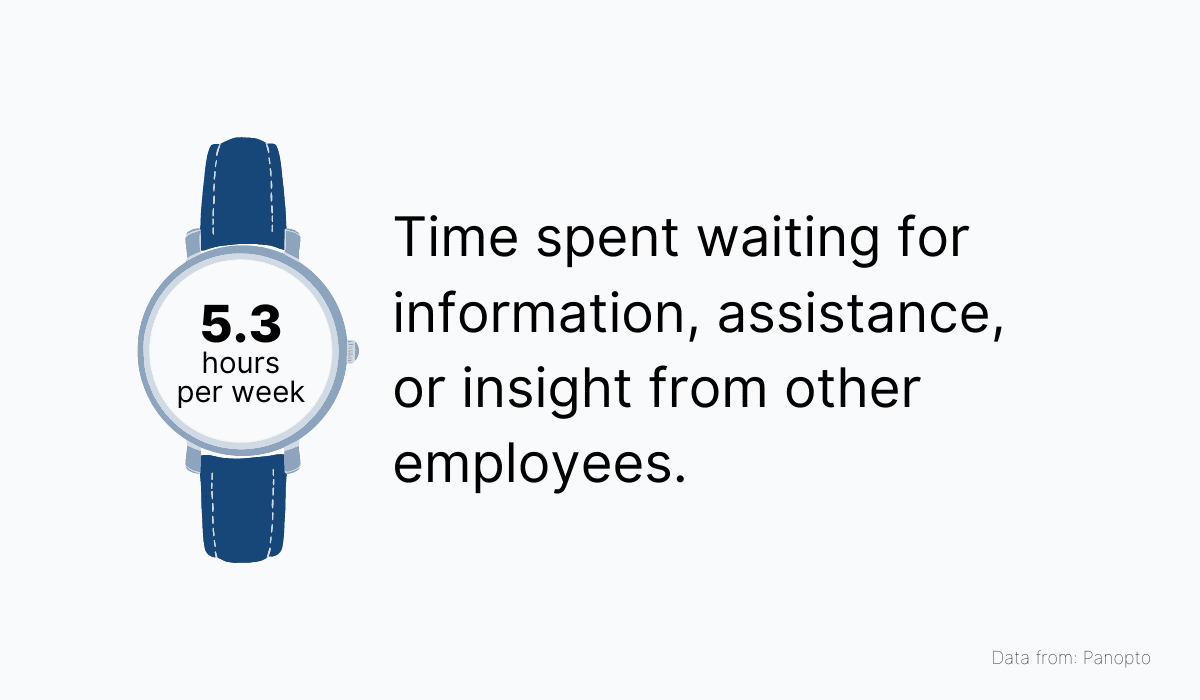
Source: Archbee.com
The point here is that knowledge can be very much present in a corporate setting, yet remain inaccessible.
However, with technical documentation, this knowledge becomes extremely easy to access at any point and by anyone with clearance.
For example, here’s a section from a content writing agency’s internal knowledge base:
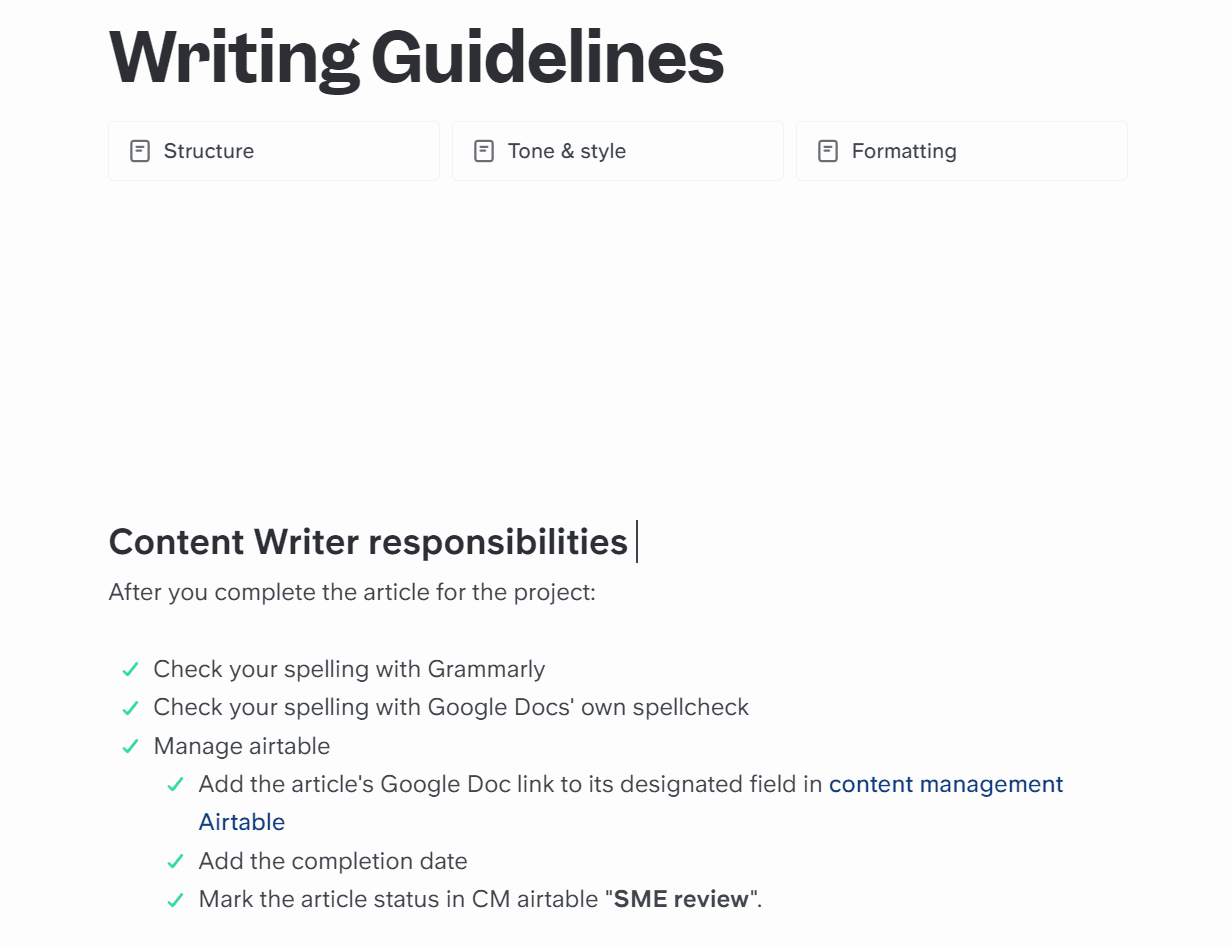
Source: Slite
Should a writer forget the procedure of submitting their article, they can simply look it up in the company knowledge base.
That’s a much faster resolution than contacting a project manager and waiting for their reply.
But it’s not just about waiting for information.
Recording work processes in this way can actually help you build roadmaps for success and prevent you from having to reinvent the wheel every time you take on a task.
Consider the following business process document for the lifecycle of incoming new orders:
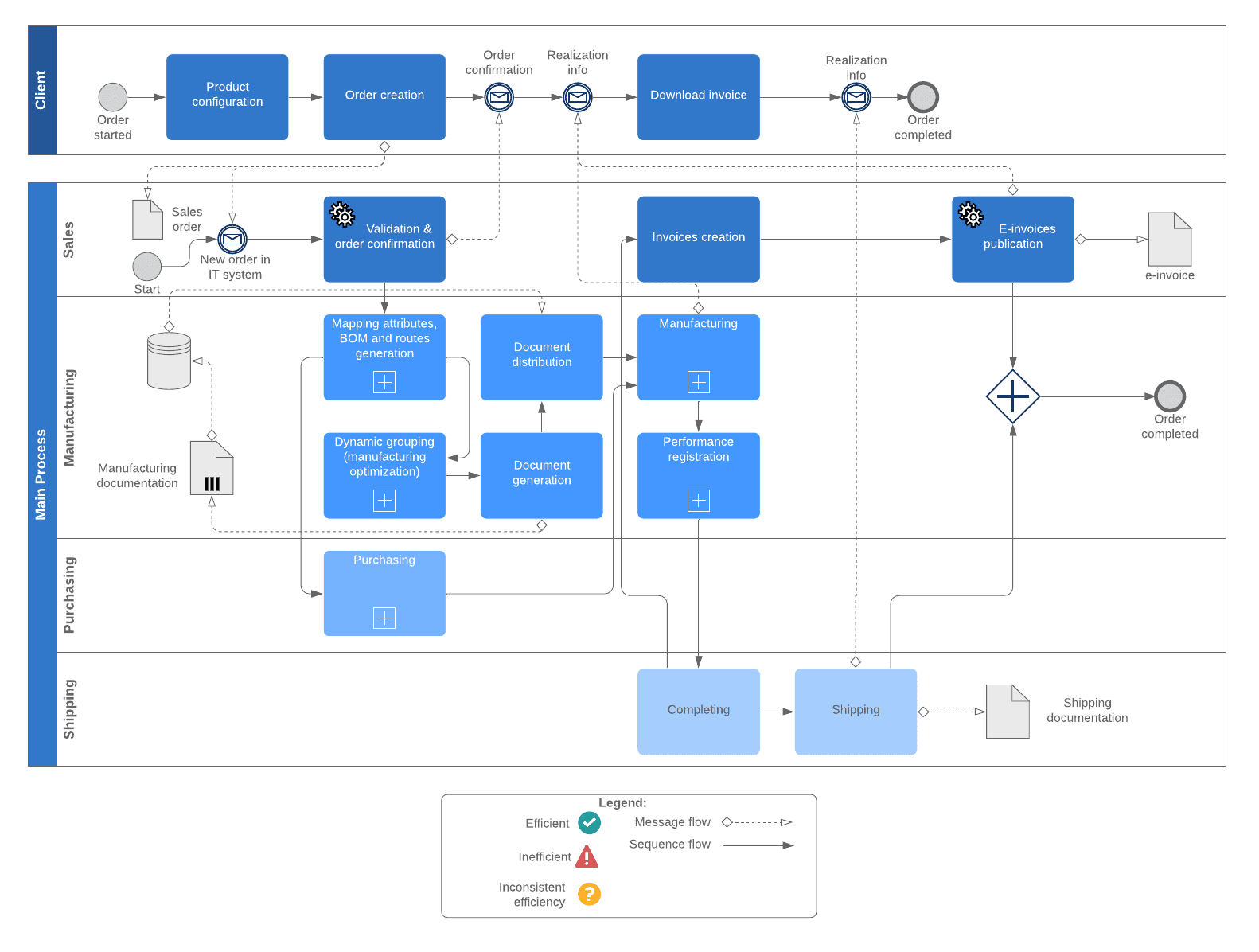
Source: whatfix
With a document like this, everyone involved knows everything that’s happening at each stage of the process and what the next step is.
There’s very little room for mistakes, and there’s no running in circles because a participant in the process doesn’t know what their next step should be.
In this way, time is saved and a new order can be received, processed, packaged, and delivered without delay.
With technical documentation available, no one has to wait to be told what to do or wonder what the best course of action is.
All the information is readily available and every employee can act immediately without fear of making a mistake.
Easier Product Development
We’ve already talked about the importance of documenting code.
However, the benefits of documenting the development process are so extensive that this topic deserves some more attention.
Let’s start with an example of a situation that mirrors the one we had with our Redditor who was forced to leave undocumented code as they were leaving the company.
What happens when a new developer joins a team and is faced with a mountain of code?

Source: Reddit
As you can see, this Redditor is unable to dive straight into their work because they’re having trouble understanding what they’re supposed to be working on.
As a consequence, they’re going to have to go through a longer than necessary onboarding period before they become productive. We wrote a very descriptive article about how long should employee onboarding take, you should check it out!
They’ll also need someone to introduce them to the code, preventing that developer from doing their own work as well.
Had the code been documented, none of this time and resources would have been expended just to get a new developer up to speed.
As for senior developers, technical documentation can do a lot to help them move projects along. If you ever wander why is technical documentation important for developers, we have an answer for you!
A great example of this is the product requirements document.
This is a document that serves as a roadmap for developers. It details what the product’s functions should be and what the steps are to get there.
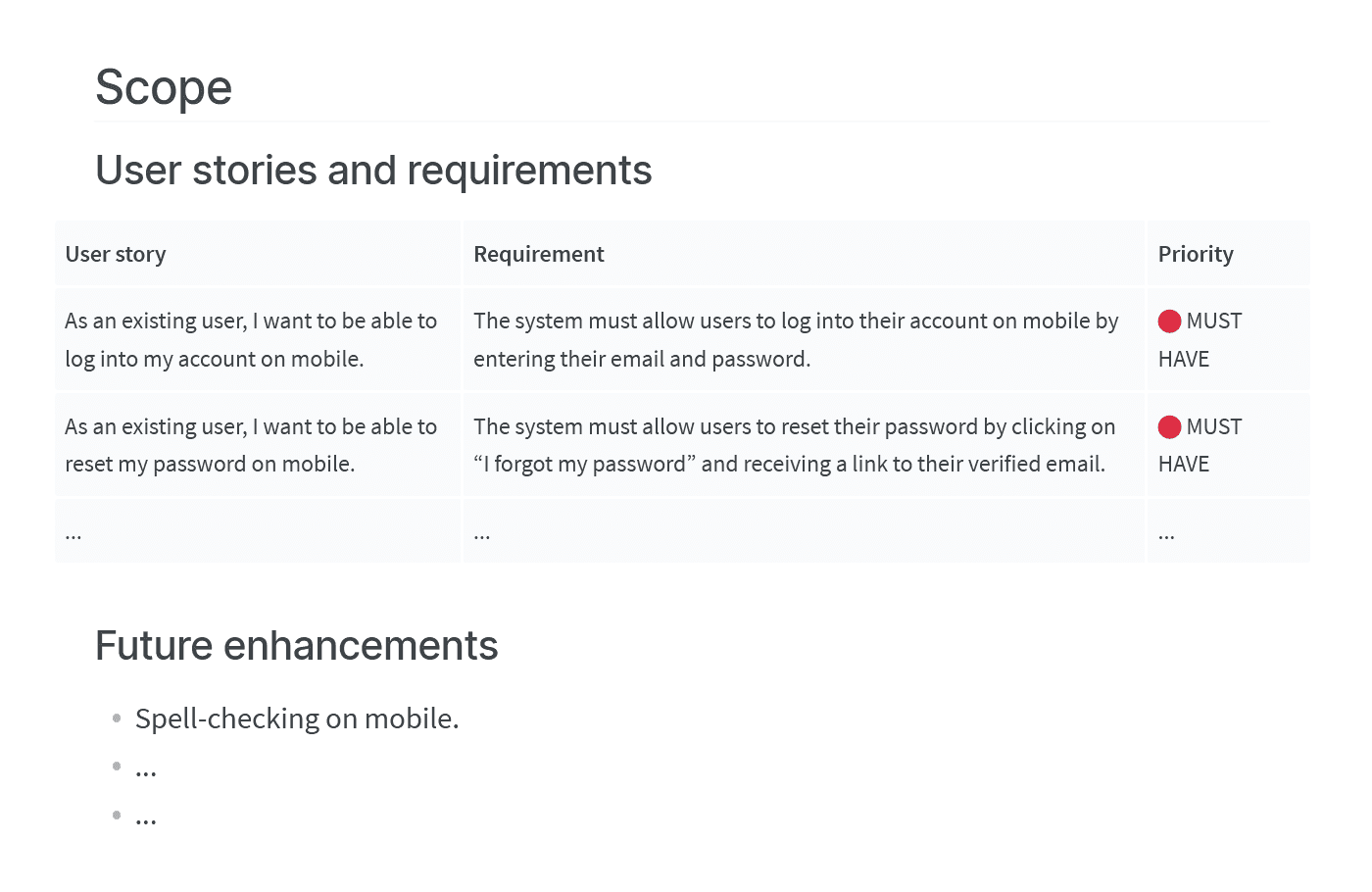
Source: Nuclino
With this document on hand, everyone working on the product is on the same page and no time is wasted doing work that isn’t pertinent to the project.
The above example also shows you how product requirements help developers prioritize their work.
Each requirement outlined is given a priority rating (the two requirements above as designated as must-haves). This is great for products that are continually updated.
In addition to that, if access to technical documentation regarding the product is given to other stakeholders in the company (project managers, upper management, and so on), these participants can follow the progress made on the product.
That way, there’s less need for developers to brief managers and spend time in meetings. They can instead focus on doing their work.
To sum up, continuously creating technical documentation for a product in development allows all project participants to stay on the same page and develop the product faster, so that it can hit the market sooner.
Good Support for Sales
So far in this article, we’ve explained how technical documentation can benefit both sides of a product: the customers using it and the developers and employees who have worked on it.
But can it also help potential customers, the people who haven’t been in contact with it yet?
Definitely.
Research shows that, as far as marketing goes, ads just aren’t as effective as they used to be. Especially with the younger crowd.

Source: Archbee.com
So how do products find their way to their intended audiences these days?
Well, the same research points to other marketing methods, such as influencers, review sites, and good old content. We prepared for you a very informative article about technical documentation as a marketing tool for software products.
Technical documentation falls under that last category. Modern buyers like to research products online before making a purchasing decision. That’s what another study has found, at least.
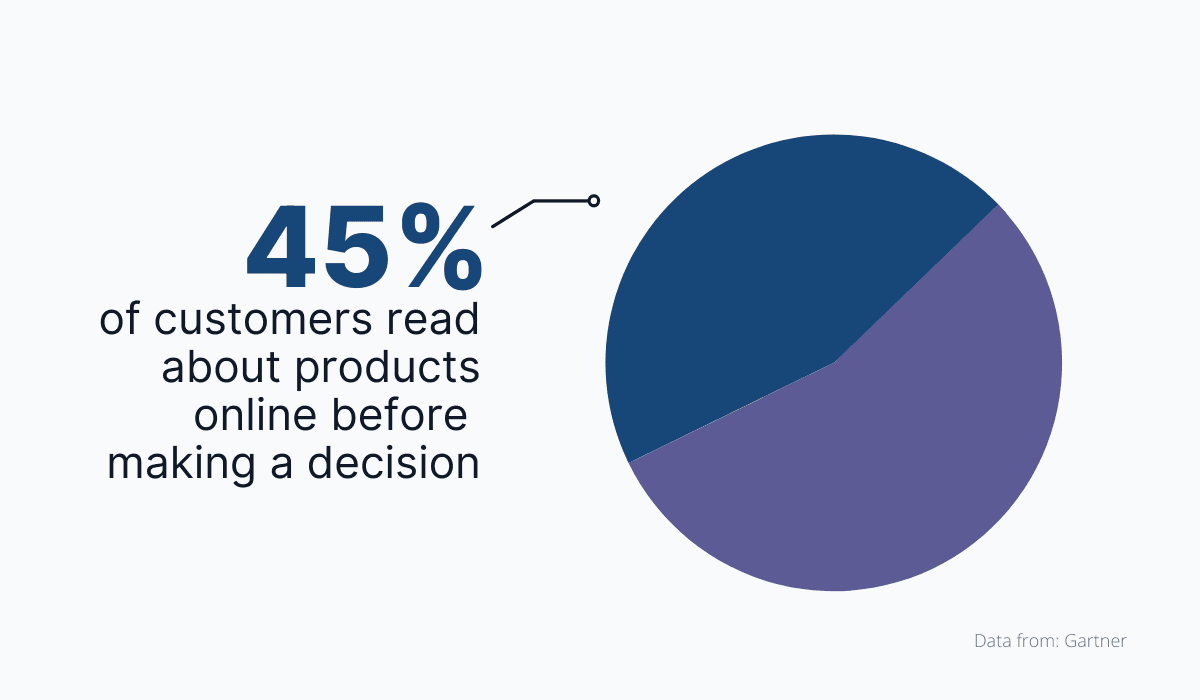
Source: Archbee.com
What this means is that if a potential buyer is researching your product, it’s likely they’ll have a look at your technical documentation.
They’ll explore the functions and features of your product and try to assess whether it’s right for their needs.
This is exactly why technical writers like to start the document collection for a product with an introduction to what the product does and who it’s meant for, like in the example below:
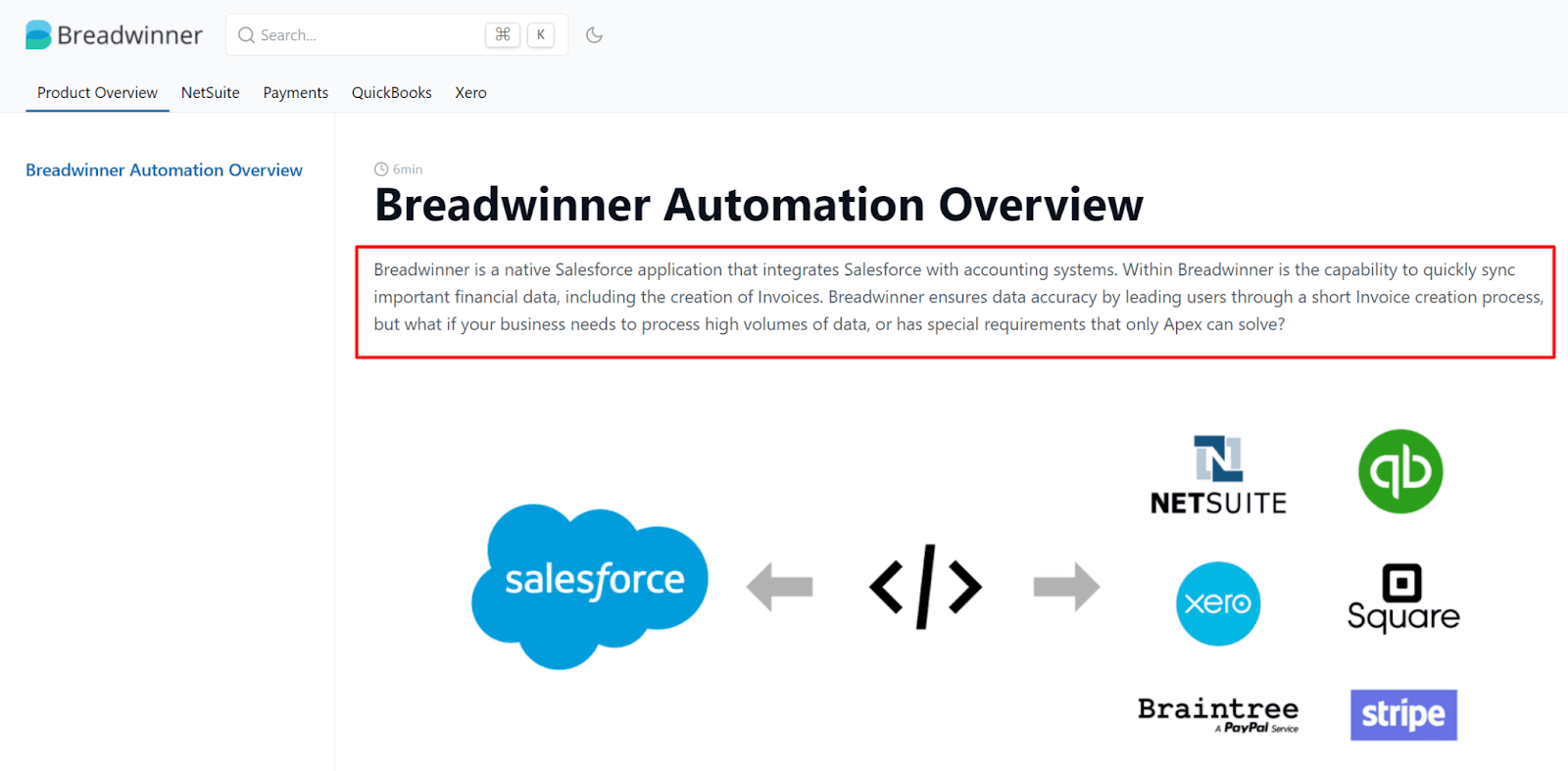
Source: Breadwinner
As you can see, when an interested party accesses the documentation, they’re greeted with an overview of the product.
The purpose of this is to generate interest in a potential customer and start explaining how the product can solve their problems.
Once the lead is warmed up, they might get into contact with the salespeople. The salesperson will do their best to answer their questions and describe how the product works.
At this point, technical documentation can once again be of great service.
For example, the salesperson might share a whitepaper with the customer to show how the product helped an existing customer.
Or they might send the customer the user guide to prove that the product is easy to set up.
Even if a customer has a more technical question, say about the development process, the salesperson can respond by sharing some of the process documentation with the customer.
With our documentation software, Archbee, this is made possible by a helpful feature called the magic link.
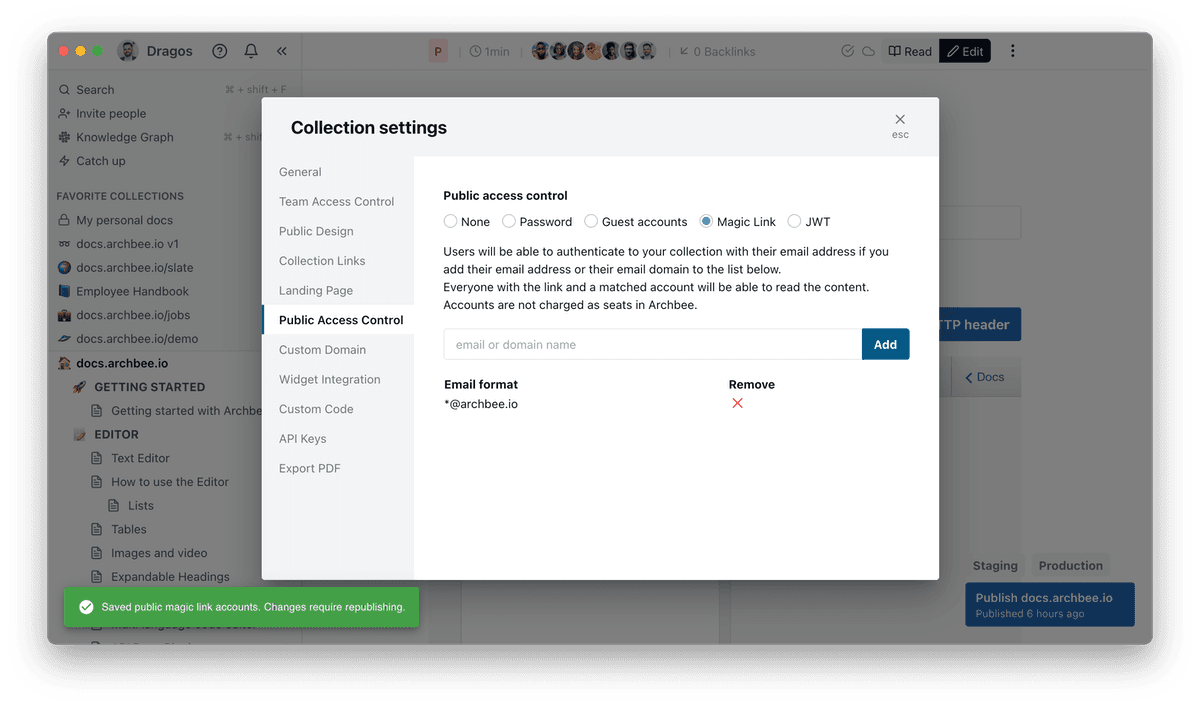
Source: Authenticate your customers with Magic Links
Archbee’s magic link allows you to authenticate people to view your internal documentation with just one click. Just generate a link with their email address and give them access.
So you see, technical documentation isn’t just about developing and successfully using products.
It can also support your sales efforts by giving interested customers a detailed overview of what they stand to gain by buying or subscribing to your product.
Conclusion
In this article, we included benefits of creating technical documentation for every stakeholder of a product: from the employees and developers building it, to interested customers and eventual buyers who use it.
Once you start writing your technical documentation, try to do the same: include articles for each one of these audiences so that everyone can benefit from your documentation.
And we have just the tool for the job. Archbee offers documentation software uniquely developed to facilitate writing technical documentation for the client side, as well as the developer side of any product.
Have a go at our free trial and find out for yourself.
FAQ
Frequently Asked Questions
Because it turns product and process knowledge into a reusable asset that powers your whole business. - For customers: It enables fast, self-serve answers, reduces support tickets, and boosts satisfaction and loyalty. - For teams: It preserves know‑how when people are out or leave, shortens onboarding, and keeps everyone aligned on how things are done. - For product and engineering: Clear requirements, architectural notes, API references, and runbooks reduce rework, speed delivery, and make handoffs safer. - For operations: It removes bottlenecks and single points of failure by standardizing processes. - For revenue: It educates buyers, shortens sales cycles, and improves adoption and retention after purchase. Done well, technical documentation becomes a competitive advantage—not just a nice‑to‑have.



